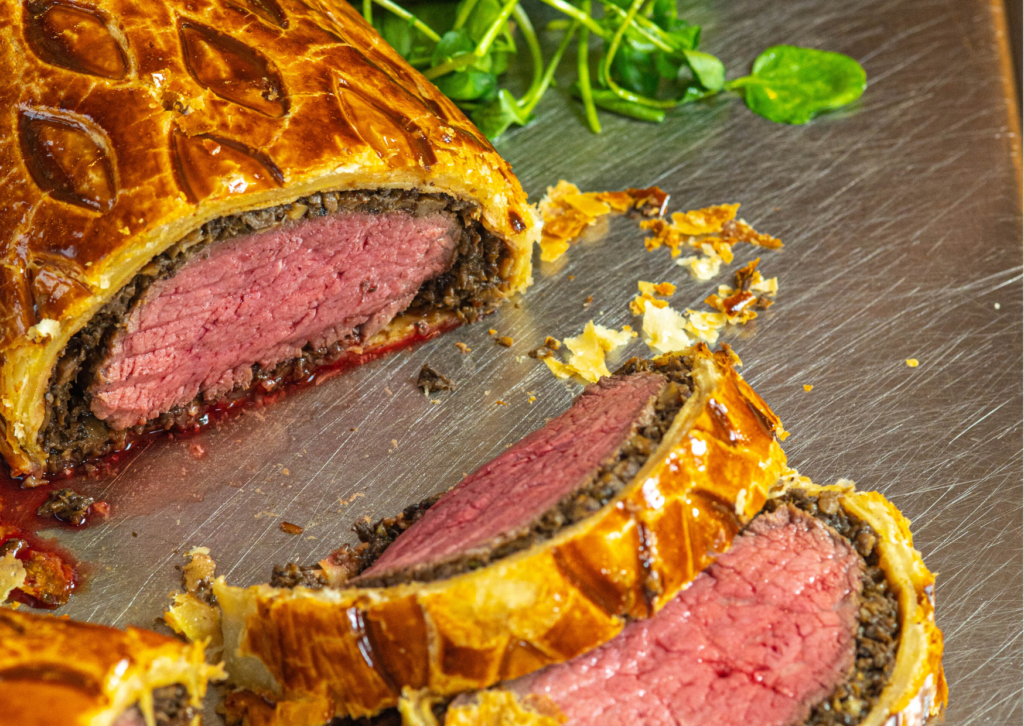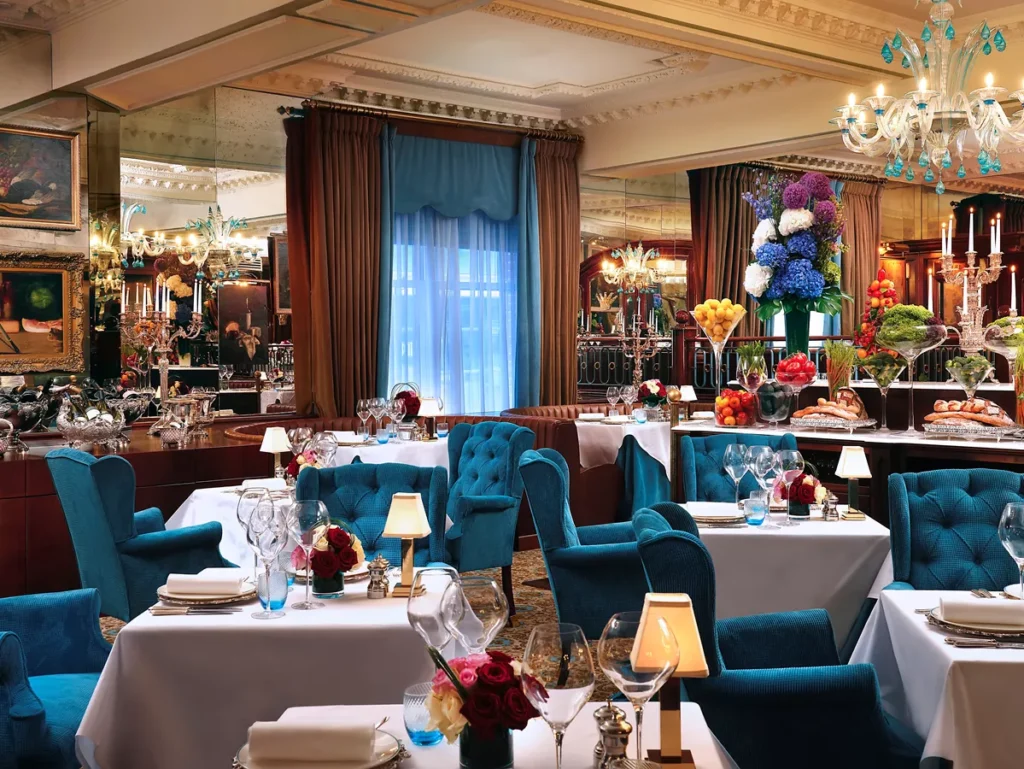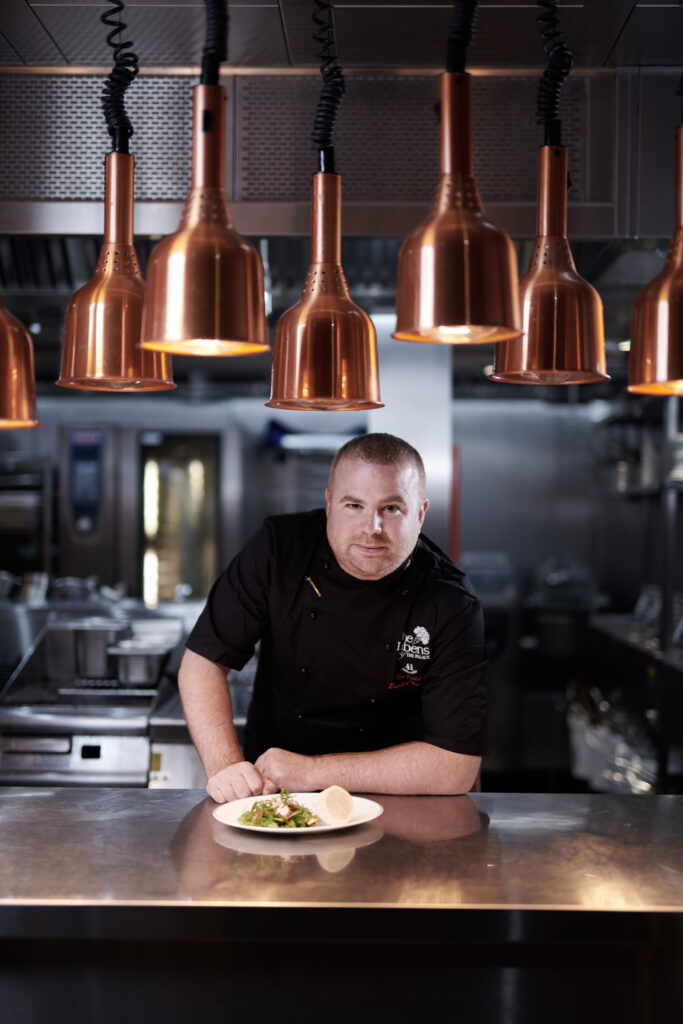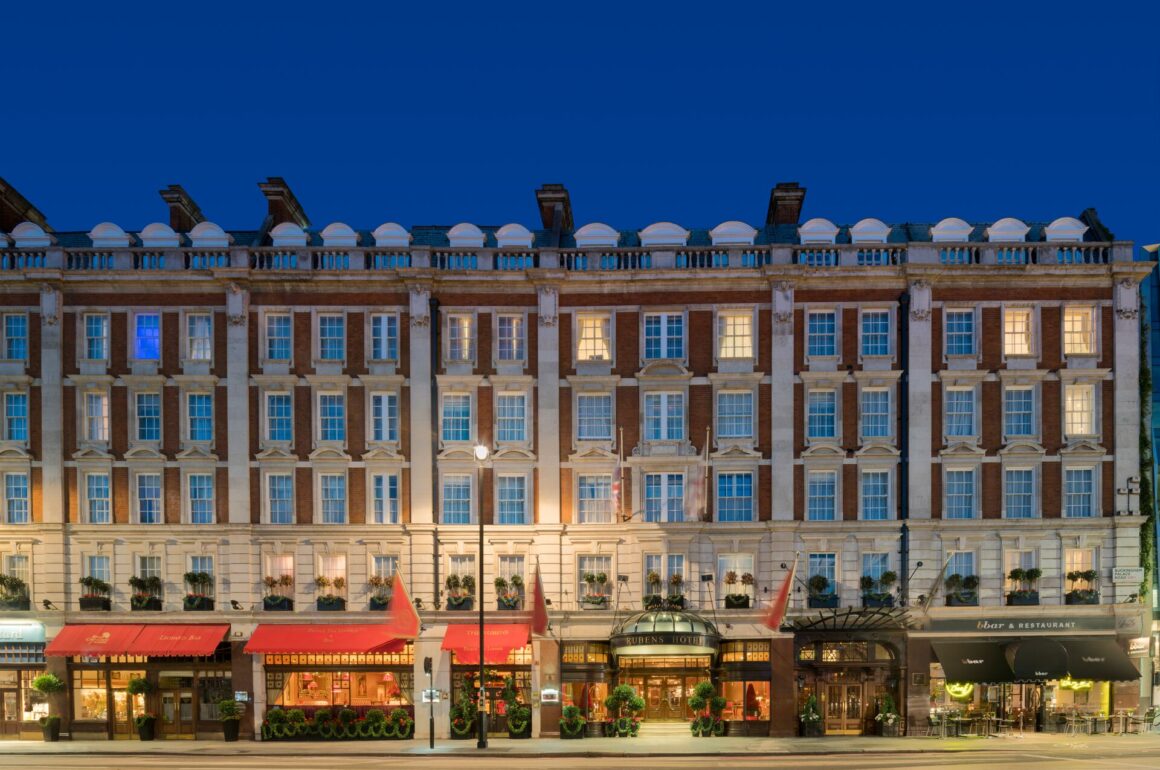Even though he makes scores of them per week, chef Ben Kelliher isn’t sick of the Beef Wellington. In fact, this classic English dish ‒ a star of his menu at the English Grill in London ‒ is a personal favourite.
The English Grill is the in-house restaurant at The Rubens at the Palace, the 5-star central London hotel Luxury Gold guests stay at during our British Royale journey.
“I often tell our guests a bit about the history of pies and pastry in the UK, and why this is something quite special to cook and present,” he tells me. Getting the puff pastry casing just right and slicing through to rose-pink beef is still a thrill. “It’s a real treat when you go out to a restaurant and see this dish on a menu; you really don’t see it that much around London,” he says. Luxury Gold customers can taste this historic dish on a visit to the Grill during the London leg of our British Royale journey.
A dish is born
The first Beef Wellington was created in 1815, made in celebration of the Duke of Wellington, Arthur Wellesley, and his victory at the Battle of Waterloo in June that year. But this pastry-swaddled beef dish has endured in British culture, becoming fashionable at the height of 1970s dinner party culture and remaining a home-cooking showstopper today. British cooking royalty from Mary Berry to Gordon Ramsay have championed its sturdy charms in recipe books and restaurants.

Beef Wellington is a classic English dish
“It’s actually one of the first dishes I made on my first job in London,” says Kelliher. “I’d make the pancakes ‒ that’s the layer between the mushroom duxelles (a paté-like mix) and the pastry.” When he began working at the Rubens at the Palace hotel, home to the English Grill, he decided to run masterclasses teaching guests how to make this British classic, as well as putting it in prime of place on the menu.
Refined reading: 10 of the Best Sustainable Fine-Dining Restaurants in the World
Reimagined for the 21st century
With the benefit of time, Kelliher has been able to play with the historic recipe for a modern palate. “We’ve been through a few versions of the dish: serving it with a red-wine sauce and a truffle madeira sauce, which are both more traditional versions,” says Kelliher. “With our current Wellington, there’s a bit of a modern twist: we serve it with a lobster sauce,” he explains. Inspired by the combination of beef and lobster in surf ‘n turf dishes, this adds a little indulgence and luxury.
Meet chef Ben Kelliher:
Though the dish was designed for meat-loving 19th-century Englishmen, it’s surprisingly versatile, says Kelliher. Faced with hosting vegetarian guests, he suggests “you could do salmon in a similar style, which would usually be called en croute, with spinach and pancake wrapped around it. You can also do vegetarian or vegan versions: we’ve used beetroot instead of beef topped with goat’s cheese, or butternut squash topped with spinach.”
One of his favourite twists on the iconic dish is a miniature version, served canapé-style. “We’ve done bite-sized, sausage-roll style ones with a small piece of beef and the mushroom duxelles spread on top rather than all the way around. Those are great for parties or events.”
As for what he’d recommend as a complimentary starter and dessert either side of your English Grill Beef Wellington? “We’re just coming into asparagus season in the UK, so I’d say our asparagus dish with morel mushrooms, confit egg yolk, grilled spring onions and a homemade milk-asparagus mayonnaise to start.” And to finish? “It has to be the Crepes Suzette, flambéed at your table.”
“We’re always trying to find a little twist to a dish and a way to make it theatrical for guests,” he adds. “It’s a great place to come for a celebration or special occasion in London.”
Related reading: How to Talk to a Sommelier

The English Grill restaurant, London
Ben’s top tips for the perfect Beef Wellington:
“We always use fillet of beef; you can use a sirloin but it would be a bit tougher. Fillet is the finer cut ‒ it should cut through like butter and really melt in your mouth. We use a centre cut of Aberdeen Angus beef from a local supplier, which is dry-aged for 28 days. We have a great relationship with our butcher and are always testing and evaluating the meats we use for the best quality.”
“We use a mixture of wild mushrooms to make the mushroom duxelles (a fine mix with shallots and butter), cooking it for quite a long time ‒ around 45 minutes or an hour. It’s crucial to get rid of the water content, or you risk making the pastry soggy when you assemble it. We also deglaze the duxelles with a bit of madeira and port to add flavor and put a little grated truffle in there.”
“When it comes to assembling, have everything prepared in plenty of time: don’t panic. You can get things like your duxelles, your puff pastry and any pancake you’re using ready well before you need to put it together, so do it in stages.”
Foodies will love: In the Kitchen with Allistaire Lawrence, Head Chef of The Werf

Chef Ben Kelliher at The English Grill, London
“Consistency is key for getting the meat perfectly pink on the inside. We’ve mastered it by cooking it at 180 degrees, for 30-35 minutes and then resting it for 15-20 minutes. That brings it up to medium rare and it largely works every time. We also advise guests in the masterclass to have a probe to check the temperature at the centre.”
“Then, when you’ve cooked it, resting it is absolutely key. You’ve got to let the beef rest for up to 20 minutes, it helps the pastry firm up, it makes the meat juicy and you’ll be able to slice it really nicely.”
We think you’ll also like: Raising the Steaks: This Buenos Aires Restaurant Makes Barbecue an Art Form








